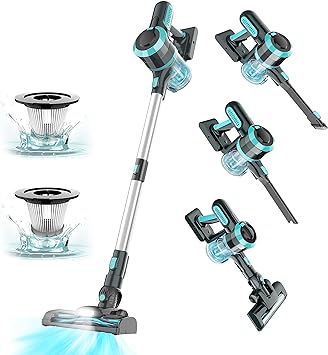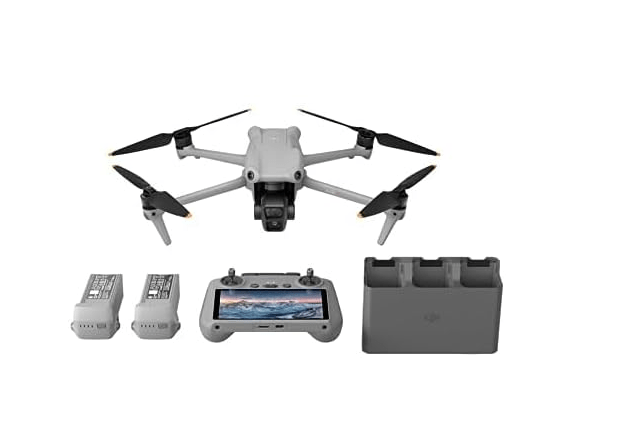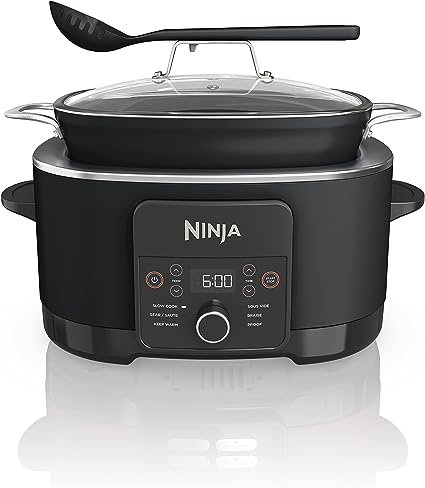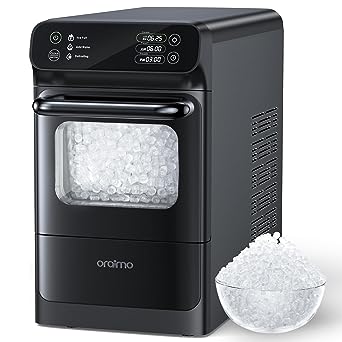Exploring the World of Drones: A Beginner's Guide to Remote-Controlled Flying

Are you looking to explore the ever-growing world of drones? Remote-controlled flying is an exciting hobby for people of all ages and levels of experience. The best affordable drones for beginners are now available on the market, and are perfect for those just starting out.
With the right drone, you can fly around your neighbourhood, take stunning aerial pictures and videos, and even compete in drone racing events. With a beginner’s guide to remote-controlled flying, you can quickly master the basics and start your adventure into the world of drones.
From selecting the right drone for you, to learning how to fly it safely and responsibly, a beginner’s guide to remote-controlled flying can provide all the and you need to make the most of your drone. Whether you’re a novice or an experienced flyer, get ready to take your drone-flying skills to the next level.
Top-rated remote-controlled flying drones
Are you looking for the top-rated remote-controlled flying drones? Well, you have come to the right place. Drones are becoming increasingly popular due to their versatility and affordability. There are many types of drones to choose from, including quadcopter drones, fixed-wing drones, racing drones and camera drones. So, before you buy a drone, it’s important to know which type is right for your needs. With a little research, you can find the drone for your budget and purpose.
What are drones?
Taking the conversation a step further, let's delve into the world of drones. But first, what exactly are drones? Essentially, drones are unmanned aerial vehicles (UAVs) that can be remotely controlled, or autonomously flown using a computer program or artificial intelligence. Originally used for military applications, drones are now being used for a variety of recreational and commercial purposes, such as aerial photography, surveillance, and search and rescue operations. These incredible machines offer a unique aerial perspective on the world around us, providing us with an opportunity to explore the sky and capture stunning images and videos. From racing drones to camera drones, there is a drone for every purpose.
Different types of drones
With the ever-growing popularity of drones, it's no wonder there are so many different types of them available. Whether you're a beginner or an experienced drone flyer, you'll find something to suit your needs.
Quadcopters, also known as multicopters, are the most common type of drone and are great for beginners. They are easy to learn to fly, and their four rotors provide excellent stability for taking aerial photos and videos.
Fixed-wing drones are perfect for longer flights and more advanced maneuvers. Their efficiency and speed make them ideal for photographers, videographers, and researchers who want to cover large areas quickly and accurately.
If you're looking for something a bit more exciting, racing drones are the way to go. With their fast motors and lightweight frames, these drones can reach speeds of up to 90mph and are perfect for getting your adrenaline pumping.
Finally, camera drones are ideal for capturing stunning aerial shots and videos.
How to choose the right drone for your needs
Looking to get in on the exciting trend of aerial adventure? With the right drone, you can join the ranks of tech-savvy pilots who are exploring the world from a unique, bird’s-eye view! But with so many different types of drones available, it can be difficult to know how to choose the right one for your needs.
The first step is to decide what you want to do with your drone. If your goal is to take stunning aerial photos or videos, you’ll want to invest in a camera drone. If you’re more interested in racing, a racing drone with a lightweight frame and powerful motors will be your best bet. If you’d like a drone that can handle a variety of activities, look for a quadcopter that offers a good balance of speed and maneuverability. And if you’re looking for an aircraft that can cover long distances, consider a fixed-wing drone.
When it comes to selecting the right drone for your needs, there are various factors to consider. A great beginner's guide to selecting RC flying gear can provide an overview of what to look for. Additionally, it is important to keep in mind the various regulations and guidelines, which include registering your drone.
Factors to Consider
When selecting the best remote-controlled flying device for your needs, there are several factors to consider. First, it is important to understand the drone regulations in your area, as these regulations can vary from region to region. Additionally, it is also important to understand the features of the drone that you are looking to buy. This includes GPS navigation, obstacle avoidance, altitude hold, the return-to-home function, hovering, forward flight, turning, and ascending/descending capabilities. The best remote-controlled flying equipment is one that is able to provide you with all of the features necessary to meet your needs, while still staying within your budget.
Drone Regulations
With all the amazing features and capabilities of today's top-rated remote-controlled flying drones, it's easy to forget one of the most important factors to consider when buying one: drone regulations. Before you take to the skies, it's important to understand any restrictions that may be in place and know the rules for safely operating your drone.
The laws and regulations regarding drones vary by country and state, but it's important to understand the basics to ensure your drone activities adhere to the law. In the US, the Federal Aviation Administration (FAA) requires all drones weighing more than 0.55 pounds (250 grams) to be registered. Additionally, it's important to know where you can and cannot fly your drone. In the US, there are certain designated areas like national parks where the FAA may restrict drone use.
It's also important to know the rules and regulations for operating your drone safely. Depending on the type of drone you purchase, you may need to look into special training or certifications.
Features to consider when buying a drone
Now that you're familiar with the top-rated remote-controlled flying drones, it's time to learn how to choose the right drone for your needs. When selecting a drone, there are a few features to consider for a successful, safe, and enjoyable flight.
One important factor to consider when buying a remote-controlled flying device is the return-to-home function. This feature allows the drone to fly back to its launch location automatically, making it easier to locate your drone if you lose sight of it. This is especially important for beginner pilots, who may not yet have the experience to maneuver their drone to safety.
Another key feature to consider is the GPS navigation, which enables your drone to fly on its own and maintain a specific altitude. This feature is also a must-have for beginners, as it prevents the drone from crashing or veering off course. Additionally, obstacle avoidance is an important safety feature to consider, as it helps your drone detect and avoid obstacles while in flight.
Pre-Flight Checklist
A pre-flight checklist is an essential part of any drone pilot's safety planning. Before you take off, you must inspect the drone and ensure the battery is charged. To ensure your safety and the safety of those around you, follow a few simple rc flying safety tips, such as checking weather conditions and adhering to airspace rules. Additionally, drone pre-flight checklist and drone flight preparation tips will help you get off the ground safely.
When it comes to the drone's battery, drone battery maintenance and how to extend the battery life of a drone are of utmost importance.
Inspect the Drone
Now that you have chosen the drone that best fits your needs, the next step is to inspect it before every flight to ensure its optimal performance. Inspecting the Drone is an important part of the pre-flight checklist, and one that should not be skipped.
The most important step of the inspection is to make sure all the propellers are securely attached to the body of the drone and are properly balanced. Unbalanced propellers can cause your drone to fly erratically and even crash. Additionally, inspect the battery and make sure it is securely attached and does not show any signs of damage.
Inspecting the drone’s body is also essential. The body should be free of any cracks, dents or other deformations, and if there are any, they should be fixed before the drone is flown. .
Ensure the Battery is Charged
Now that you've chosen the right drone for your needs, it's time to move on to the pre-flight checklist. One of the most important steps is to ensure the battery is charged. Before taking flight, it's essential to make sure your drone has enough power to last for the duration of the flight. Charging the battery ahead of time ensures that your drone will be able to complete the flight, and that you won't have to worry about it running out of power mid-flight.
The best way to make sure your battery is charged is to check it before every flight. Charge it overnight and right before taking off. This not only ensures your battery is fully charged, but it also helps extend the life of your battery. Make sure to read the instructions for the specific battery you're using, as different batteries may require different charging methods.
When it's time to fly, always make sure the battery is securely installed in the drone. An improperly installed battery could be dangerous and cause the drone to malfunction.
Safety precautions for flying drones
The drone is ready to take off, but safety should always come first. As a drone pilot, you should always take the time to do a pre-flight safety check. Before launching your drone, make sure you are aware of all the safety precautions you should take to ensure a successful and safe flight.
The first and most important safety precaution is to ensure that your drone is in good condition. Carefully inspect the drone and its components, such as the propellers, motors, and battery. Check for any signs of damage or wear, and replace any damaged or worn parts.
The second safety precaution is to make sure the battery is fully charged. Rechargeable batteries can be dangerous if they are not stored or used correctly, so be sure to follow the manufacturer’s instructions for proper battery maintenance.
Finally, before launching your drone into the air, take the time to familiarize yourself with the local airspace rules and regulations.
How to control a flying drone effectively
Learning how to control a flying drone effectively is an exciting challenge. For a successful piloting experience, you must master the fundamentals of takeoff and landing, basic maneuvers, and drone flight safety regulations. Remote-controlled flying precautions are essential, as is a beginner's guide to remote-controlled flying techniques. Along with and , you must also understand the basics of and . Finally, you must be aware of applicable drone flight safety regulations and .
Takeoff and Landing
Takeoff and landing are two of the most important parts of successful and safe drone flight. With the right preparation and practice, these two maneuvers can become second nature. Knowing how to take off and land safely will ultimately help you become a better drone pilot. Boldly taking off and landing is the first step to mastering drone control.
Before attempting takeoffs and landings, familiarize yourself with your drone’s . This will provide you with the necessary instructions and safety precautions to take off and land safely.
When you’re ready to take off, ensure that you have your drone battery properly charged and that the takeoff location is free from any obstacles or people. For a successful takeoff, you will need to have your drone at at least three feet from the ground. Once you have your drone in the air, use movements to control its altitude and direction.
Basic maneuvers to master when flying a drone
Having gone through the pre-flight checklist, it's time to take off and start mastering the basic maneuvers of flying a drone. In order to control a drone effectively, one needs to have a firm understanding of ascending, descending, hovering, forward flight, and turning. Each of these maneuvers can be achieved with the help of the drone's various controls and the pilot's skill.
Ascending and descending can be achieved by using the throttle, which is the control that determines how high or low the drone flies. Hovering is achieved by simultaneously controlling the throttle and the yaw, which is the control that allows the drone to turn. Forward flight is achieved by pushing the throttle forward and turning the drone with the yaw. Turning can be done by using the roll and pitch controls, which move the drone left and right, and forward and back, respectively.
It is important to remember that these maneuvers should be performed with caution and safety in mind.
Drone flight safety regulations
No matter how much skill a drone pilot has, safety regulations must always be taken into account before taking off. It is essential to research and understand the local laws and regulations in your area to ensure that your flights are legal. Be sure to also adhere to any federal regulations that have been imposed, as well as no-fly zones that may be in effect. Additionally, it is important to register your drone with the if it meets certain weight requirements. Taking these steps to ensure that you act in a responsible and lawful manner will help to ensure that you have a safe and enjoyable flight experience.

Tips for capturing stunning aerial photos with a drone
Capturing stunning aerial photos with a drone can be a daunting task for beginners. That's why it's important to understand drone cameras, take great photos, and get a beginner's guide to aerial videography with a remote-controlled drone to get you started. Best drones for aerial photography are the ones with the highest resolution cameras, and the drone camera settings for aerial photography should be adjusted to the environment and the type of shot you're hoping to capture. It's also important to consider composition tips for drone aerial photography to get perfect, professional-looking shots.
Understanding Drone Cameras
Taking stunning aerial photos with a drone is a great way to capture moments and memories from a different perspective. To do so, it is important to first understand the basics of drone cameras. Understanding Drone Cameras is essential for getting the most out of your aerial photography sessions.
Drone cameras come in many shapes and sizes. Before purchasing one, make sure you have a clear understanding of its features, capabilities, and limitations. The lens, sensor, and image resolution can all affect the quality of the images you take. Additionally, many drones have specific settings for aerial photography, so it is important to familiarize yourself with how to adjust these to get the perfect shot.
To ensure great quality photos, you should also make sure your drone camera is equipped with filters and other accessories, such as a neutral density filter. These can help improve the clarity and quality of your photos by reducing glare and allowing you to capture motion with drone photography.
Taking Great Photos
Taking great photos with a drone requires a thorough understanding of the drone camera and its features. With the right equipment and knowledge, you can capture stunning aerial photos that will make your friends green with envy. Here are some tips on capturing motion with drone photography, using filters for enhanced drone aerial photography, adhering to drone regulations, avoiding crashes while shooting aerial photos, adding depth and perspective to drone aerial photos, and tips for color correction in drone photography.
When capturing motion, anticipate the movement of your subject and adjust the flight path accordingly. Use shutter speed to freeze motion or blur it according to your preference. Additionally, make sure to adjust the camera settings to ensure the desired exposure levels and capture the right amount of light.
Using filters can enhance the quality of your aerial photos. Neutral density filters reduce the amount of light that enters the lens, allowing you to use slower shutter speeds and capture sharper images.
Beginner's guide to aerial videography with a remote-controlled drone
Now that you understand the basics of controlling a drone, you can take it one step further and learn how to create stunning aerial videos. When it comes to beginner's guide to aerial videography with a remote-controlled drone, there are a few things to keep in mind that will set your videos apart from the rest.
To begin, make sure you understand the drone aerial photography regulations in your area, as well as tips for avoiding crashes while shooting aerial photos. Additionally, consider investing in some essential accessories for drone aerial photography, such as a gimbal or a controller.
When shooting your video, be sure to get creative with your angles. Try to get different shots from different heights and perspectives. Additionally, practice your and techniques to add a cinematic feel.
When editing your video, experiment with different color schemes and filters. This can transform a simple video into an immersive experience.
Flying in Different Conditions
Flying in different conditions can be a great challenge for pilots, especially when it comes to windy conditions, night flying and mastering basic maneuvers with a remote-controlled aircraft. It is important to be aware of the risks associated with flying in different conditions, and to learn how to fly safely and responsibly. In windy conditions, for example, a drone must be able to handle strong gusts of wind and maintain stability while in flight. At night, visibility can be an issue, so it is important to ensure that the drone is equipped with the proper lighting and visibility aids.
Windy Conditions
Now that you have a better understanding of how to capture stunning aerial photos with a drone, let's turn our attention to flying in different conditions. Windy environments can pose a challenge, but with the right preparation and proper safety protocols, you can fly a remote-controlled aircraft safely. Before taking off, check the weather conditions to make sure that it is safe to fly. Windy weather can cause turbulence and can make it difficult to control the drone. Additionally, be sure to adhere to airspace rules and maintain line of sight.
When flying in windy conditions, make sure that your remote-controlled flying safety is your number one priority. How to fly RC safely is an important part of your pre-flight checklist, which should include a drone pre-flight checklist and drone flight preparation tips. Additionally, it is important to be aware of the remote-controlled flying precautions to take in order to avoid any accidents.
Night Flying
Now that we have discussed the tips for capturing stunning aerial photos with a drone, let’s explore more of the nuances of flying in different conditions. Night Flying in particular can be a challenge, but also a rewarding experience.
When flying at night, it is important to take the necessary precautions to ensure safe operation. Make sure to have a good understanding of the drone’s battery life, as it will be especially important in the dark. Additionally, be sure to carry spare batteries so you can remain in the air for longer periods of time. Before you take off, it is also important to check your local regulations as some jurisdictions may not allow night flying.
The drone’s lighting system can be a great asset when flying in the dark. Bright LED lights can help you locate the drone in the sky and maintain a visual connection. With proper illumination, the drone can be seen from a greater distance and the camera can be used to capture night time shots.
Tips to master when flying a drone
Having mastered the basics of drone flying, the next step is to start learning some advanced maneuvers. Once you are confident in basic flight control, take the time to practice basic maneuvers to master with your drone. These include hovering, turning, ascending/descending, and forward flight. These are essential skills for any drone pilot, and with a bit of practice, you can master them.
It is important to remember to take safety precautions when flying a remote-controlled aircraft safely. Always adhere to the airspace rules and check the weather conditions before flying. Additionally, have a pre-flight checklist to go through and make sure all of the necessary gear is ready.
When learning how to fly drones, it is important to practice as often as possible. Make sure you are in a safe environment and always maintain a line of sight. With the right practice and attention to safety rules, you can master basic maneuvers to master with your drone.
Drone Maintenance
To ensure that your drone remains in top condition and performs optimally, it is important to maintain it properly. This includes cleaning and calibrating components, troubleshooting common issues, and performing essential maintenance tasks.
When it comes to troubleshooting remote-controlled flying issues, the first step is to inspect the drone’s wiring and connections. Drone camera cleaning is also important. This will help maintain the quality of your drone’s pictures and videos. Drone propeller inspection should also be done regularly to ensure that there are no cracks or any other damage.
Cleaning and Calibrating
Now that you've learned how to fly your drone in different conditions, it's time to talk about an essential part of drone ownership: cleaning and calibrating. Keeping your drone clean and in good working order will ensure that it flies safely and efficiently. It's important to inspect and clean your drone, as well as calibrate it regularly.
To begin, make sure to keep your drone clean, free from dirt and debris, and away from moisture and dust. This will prevent damage to the sensitive electrical components and also extend the life of the propellers. Additionally, you should also check for any loose wires or damage to the body.
Drone firmware updates are also important. Outdated software can cause performance issues and even crashes, so make sure to keep your drone’s software up-to-date. Additionally, you should check the drone GPS signal to ensure that your drone is accurately tracking its location.
Troubleshooting common issues with flying drones
As much as drones can be a joy to fly, they're also complex pieces of technology that require a certain level of technical know-how and maintenance. Troubleshooting common issues with flying drones is a key part of keeping your drone in tip-top shape. From GPS signal checks to drone camera cleaning and propeller inspection, there are a few essential steps to take in order to keep your drone in good health.
Before attempting to troubleshoot, you should always do a firmware update first. This is the best way to ensure that your drone is running the most recent version of its software. Once this is done, you should then check for any other issues that may be preventing your drone from flying correctly. For example, if you're having trouble with GPS signal, it could be due to an antenna issue or something wrong with the hardware.
Essential maintenance tips for remote-controlled drones
Now that you’ve learned how to fly your drone in different conditions, it’s time to understand the basics of drone maintenance. Cleaning and calibrating your drone regularly is essential to ensure its performance and safety. As the drone’s owner, it’s your responsibility to keep it in top condition. Here are a few essential tips for remote-controlled drone maintenance.
Firstly, inspect your drone before every flight. Make sure the propellers are in good condition and that the drone’s body isn’t damaged. Check the battery and replace it if necessary. Additionally, do a GPS signal check before every flight. This will ensure that you’re able to maintain a stable connection with your drone.
Ensure you clean your drone’s camera lens and sensors after every flight. This will help keep the drone in good condition and ensure that it takes high-quality photos and videos.
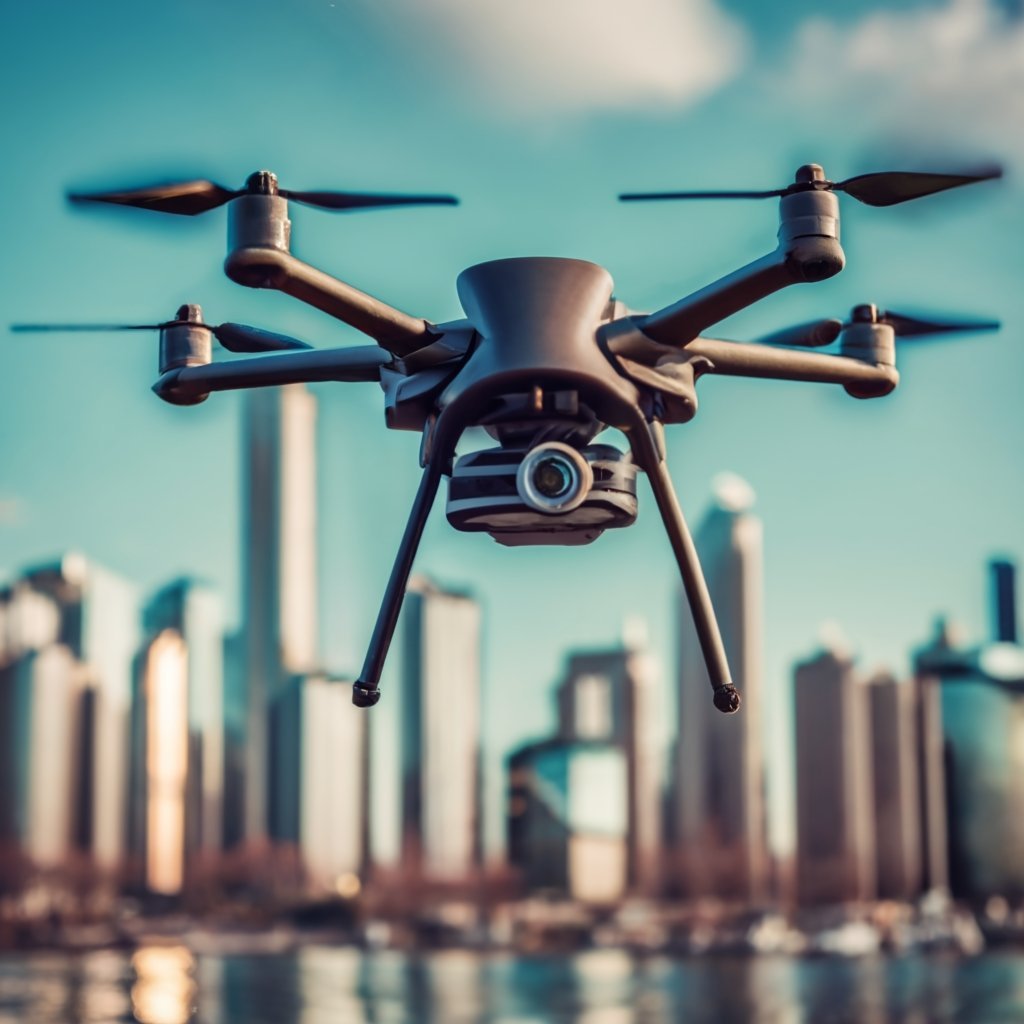
Post-Flight Checklist
Now that you have flown your drone, it's important to make sure to store it properly and check for any damage. Make sure to inspect your drone camera stabilization, and organize any drone footage files. Before you store your drone, it is also important to back up any drone data, document flight logs, and even analyze the data. You can also enhance your drone photos with post-processing!
*It's important to take the time to properly care and store your remote-controlled flying drone after every flight.
Storing the Drone
Once you’ve completed your post-flight checklist and made sure your drone is in perfect working order, it’s time to store your drone away. Proper storage is essential for keeping your drone in pristine condition, and ready to go for your next flight. Storing your drone properly helps to extend its life, and ensures it’s always ready for your next flight.
When you’re ready to store your drone, the first step is to check for damage. Look for any signs of damage to the propellers, motors, or body. If you notice any damage, repair it before storing your drone. Once the repairs are complete, clean the drone with a soft cloth and some cleaning solution. Be sure to check the drone camera stabilization and inspect it for signs of wear and tear.
Next, organize your drone footage and backup your drone data. Properly archiving and organizing your drone footage will help you access and analyze your data quickly and easily.
Checking for Damage
After taking all the necessary precautions for flying and maintaining a drone, it is important to check for any damage that has occurred during your flight. This is an essential step to ensure the long-term performance of your drone and to ensure that it is safe to fly. Checking for damage should be done with utmost care and attention to detail, as any faults or flaws in the drone can cause serious safety issues.
Begin by inspecting the drone and all its components—the propellers, the body, and the camera. Make sure the propellers are in good condition and that there are no cracks in the body or the camera. Additionally, it is important to check the drone camera stabilization to make sure the camera is functioning properly and that the footage is not blurry.
Next, check the controller and the battery. Check for any wear and tear and make sure all the connections are working properly.
Proper care and storage of remote-controlled flying drones
After the post-flight checklist is completed, making sure to store your drone properly is essential for its longevity. Proper care and storage of remote-controlled flying drones is a critical part of the overall maintenance process. It's important to make sure that the drone is stored in a safe place away from direct sunlight and extreme temperatures. Additionally, it's important to make sure that the drone is dry and free of dust and debris.
It's also a good idea to perform a and look for any signs of damage. If any damage is found, it should be addressed immediately. Before storing the drone, it's also important to make sure that all and backed up. Additionally, it's useful to document any and use the data to analyze the drone's performance. This can be a great way to identify any areas of improvement or to enhance .
Conclusion
Exploring the world of drones is an exciting task for any beginner. From pre-flight checklists to capturing stunning aerial photos, this beginner's guide to remote-controlled flying provides the necessary information and tips to make your journey into the sky a successful one. Whether you’re just starting out, or an experienced flyer, this guide will equip you with all the necessary skills to ensure you have an enjoyable and safe experience. So if you’re ready to take to the skies, grab your drone and get ready to explore the exciting world of remote-controlled flying.
Make Your Business Online By The Best No—Code & No—Plugin Solution In The Market.
30 Day Money-Back Guarantee
Say goodbye to your low online sales rate!


